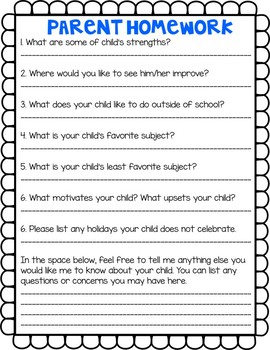My first year of teaching I remember trying to get sign up sheets available for room parents and volunteers. I worked with a great team that did not use much technology so it was an experience of tracking clipboards with sign up sheets and surviving a very full back to school night. My second year we started off the year by expanding that basic classroom forms, although still in paper format, from just basic communication information to include a more in depth cultural and ethnic snapshot of each family. The attempt to create a better school home connection was quickly disrupted by the pandemic. Soon we all found ourselves scrambling to keep our heads above water, from home, while we adjusted to a new way of teaching. It became clear that the idea of parent involvement was more on a survival mode and lots of consideration and compassion was shared with everyone's changing home and work life. As we adjusted back into in person learning I feel like that connection we were aiming to reach with our families took a back burner. The feelings of fear, anxiety, and excitement filled the hallways and classrooms. Now finally after feeling like we have finally gotten our footing again within the building it's time to create the bridge between school and home.
I recently watched a video that followed a case studies from two children's centers in Europe. These centers found interactive ways to obtain parents' needs, feedback, thoughts, and suggestions. The transparency to help keep parents involved in programs like Parent Focus Groups was admirable to watch. (Real Life Productions, 2010) Rather than sending surveys or questionnaires home as communication, parent were invited into the building to participate in Parent Focus Groups creating a 2 way partnership between families and staff. Parents had a voice to share about current services as well as services they felt were missing. The dialogue seemed open and fluid even including services, programs and suggestions available of the parents. In one segment of the video a staff member offers information to a mother who might benefit from ESOL courses that were available including child care. (Real Life Productions, 2010) They made a point to mention the importance of parent involvement to create a community, especially between families. When everyone gets together and communicate amongst each other, the topics are typically relatable and parents may feel more comfortable sharing. By including a parent representative, all of these ideas and/or concerns can be collected and then shared with staff.
At the beginning of this school year my 2nd grade team did send out "Parent Homework" that served a type of survey to get a deeper look into lives of our students and their families. It was a nice opportunity to learn about learning styles, interests, cultural holidays, even difficult life events that might effect their child. I challenge myself to look ahead to the years to come and see how I can better the way to create parent involvement. For one I will definitely digitalize the questionnaire, maybe even create talking points for parents to share amongst themselves while waiting for the back to school night presentation to begin. One thing my school did start to do this year which I think is a step in the right direction is they hosted a "Cafecito de la mañana" for our Hispanic Community members. At this meeting, Spanish speaking community members had a space to come into our school building and ask any questions they may have, as well as meet other families that they may relate to. I hope to help my community create more events like these throughout the school year so that we may continue to better our parent involvement. Next month my school also hosts a "Picnic on the Terrace" evening, where both families and staff come to have a picnic together. It's a great opportunity to catch up with previous students and their families as well as with current ones. Do you or your school have unique events held for families to come together?

Involving Parents : Making a Difference
References:
Real Life Productions (Producer), & . (2010). Involving Parents: Making a Difference. [Video/DVD] Teachers TV/UK Department of Education. Retrieved from https://video.alexanderstreet.com/watch/involving-parents-making-a-difference
I used to send out a parent survey at the beginning of the year. I haven't done that since the pandemic. I guess it's time to bring it back. It really helps to see what the parents know about their child and how I can best support that family. Thanks for the reminder!
ReplyDelete